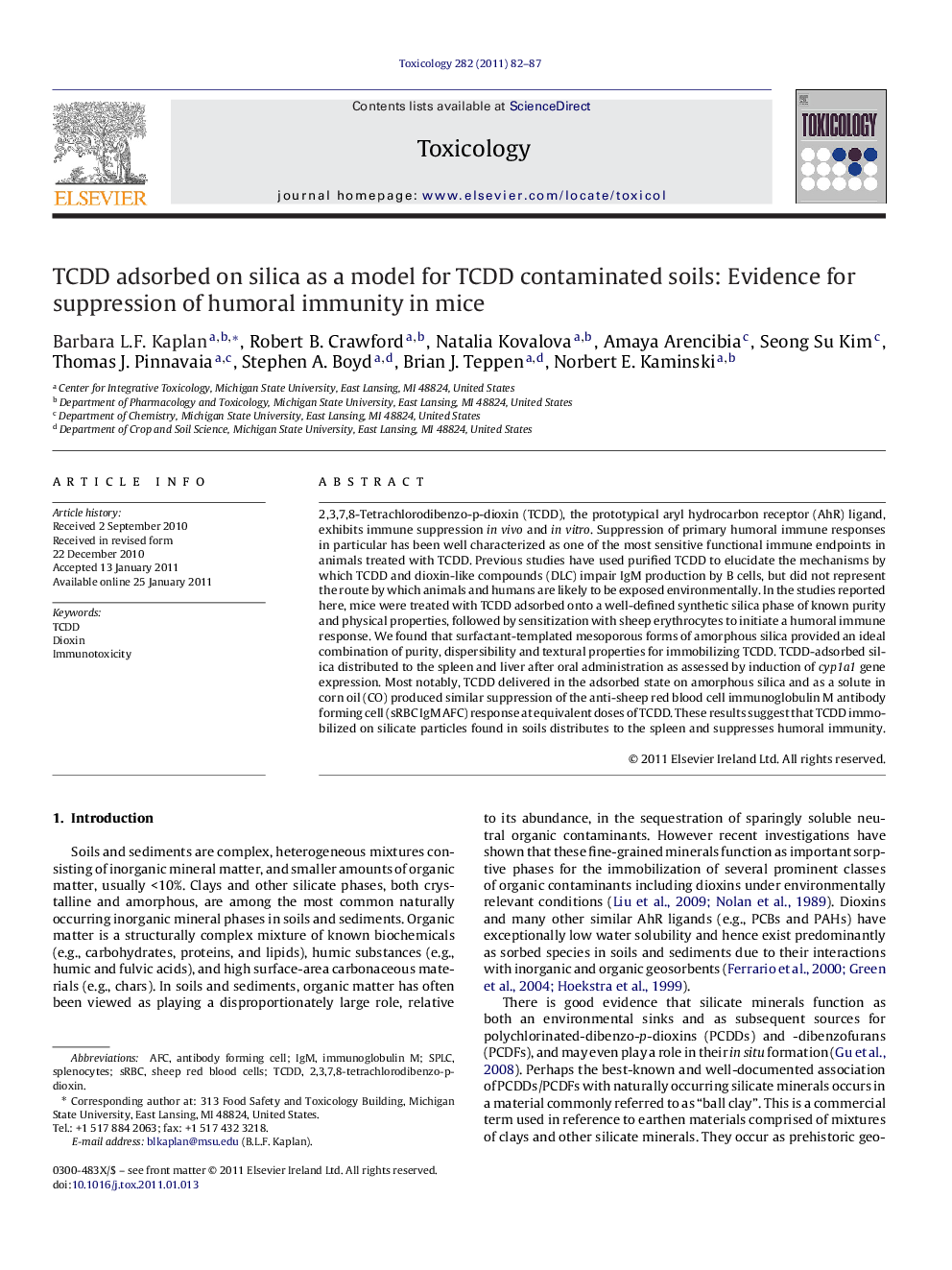| Article ID | Journal | Published Year | Pages | File Type |
|---|---|---|---|---|
| 2595997 | Toxicology | 2011 | 6 Pages |
2,3,7,8-Tetrachlorodibenzo-p-dioxin (TCDD), the prototypical aryl hydrocarbon receptor (AhR) ligand, exhibits immune suppression in vivo and in vitro. Suppression of primary humoral immune responses in particular has been well characterized as one of the most sensitive functional immune endpoints in animals treated with TCDD. Previous studies have used purified TCDD to elucidate the mechanisms by which TCDD and dioxin-like compounds (DLC) impair IgM production by B cells, but did not represent the route by which animals and humans are likely to be exposed environmentally. In the studies reported here, mice were treated with TCDD adsorbed onto a well-defined synthetic silica phase of known purity and physical properties, followed by sensitization with sheep erythrocytes to initiate a humoral immune response. We found that surfactant-templated mesoporous forms of amorphous silica provided an ideal combination of purity, dispersibility and textural properties for immobilizing TCDD. TCDD-adsorbed silica distributed to the spleen and liver after oral administration as assessed by induction of cyp1a1 gene expression. Most notably, TCDD delivered in the adsorbed state on amorphous silica and as a solute in corn oil (CO) produced similar suppression of the anti-sheep red blood cell immunoglobulin M antibody forming cell (sRBC IgM AFC) response at equivalent doses of TCDD. These results suggest that TCDD immobilized on silicate particles found in soils distributes to the spleen and suppresses humoral immunity.
